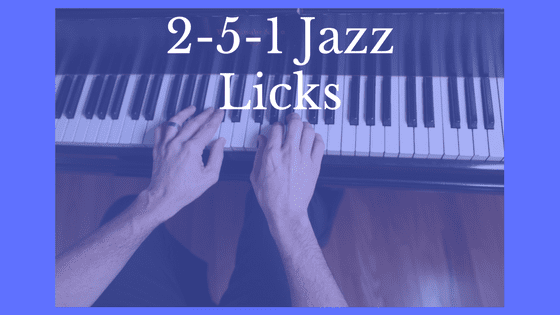ii-V-I Jazz Licks

As most jazz players know, and many jazz students quickly learn, ii-V-I jazz licks (and the ii-V-I progression) are at the heart of jazz improvisational study. The study of ii-V-I jazz licks is important for a few reasons:
- The ii-V-I progression will be frequently encountered in the jazz language, especially in the jazz standards and what is referred to as the American Songbook, and so students must be familiar with recognizing it and navigating it;
- ii-V-I jazz licks offer a structured, methodical starting place for the study of improvisation as a whole, which can sometimes seem daunting to jazz students.
- By studying the intricacies of various ii-V-I jazz licks, students begin to understand the relationships between chords and intervals, which is very important to more advanced jazz improvisation.
In this article we are going to look at a couple ii-V-I jazz licks and dissect the lick so that we have a better understanding of how and why these licks work. We'll also talk shop - a bit of music theory - in order to deepen our understanding of harmony and chord scales. So let's get started!
ii-V-I Jazz Licks #1
ii-V-I jazz lick #1 is borrowed from a Charlie Parker solo and is based on outlining the chords in the chord progression.
Let's examine this lick more closely. First, notice that we're in the key of Bb major. Next, notice that ALL of the notes in this lick (with one exception) come from the Bb major scale. (The only "outside" note is the 'E natural' - and technically the 'C#' grace note). Thirdly, notice that most of this lick is made up of chord tones from each of these three chords. In the Cm7 measure, the lick uses only 4 different notes, 3 of which are chord tones (the Bb, G, and Eb). In the F7 measure 6 different notes are used, 4 of which are chord tones. This illustrates how important chord tones are to improvisation - so chord tone recognition should absolutely be part of your jazz practice.
ii-V-I Jazz Licks #2
In ii-V-I jazz lick #2, we notice again that it is made up entirely of notes from the Bb major scale.

When we begin a Bb major scale on C (the 2nd scale degree of Bb major) we get what is called a dorian scale. When we begin a Bb major scale on F (the 5th degree) we get what is called a mixolydian scale. So we could more accurately say that the chord scale for Cm7 is C dorian, and the chord scale for F7 is F mixolydian.
Check out our ii-V-I jazz licks lesson for more great licks!
